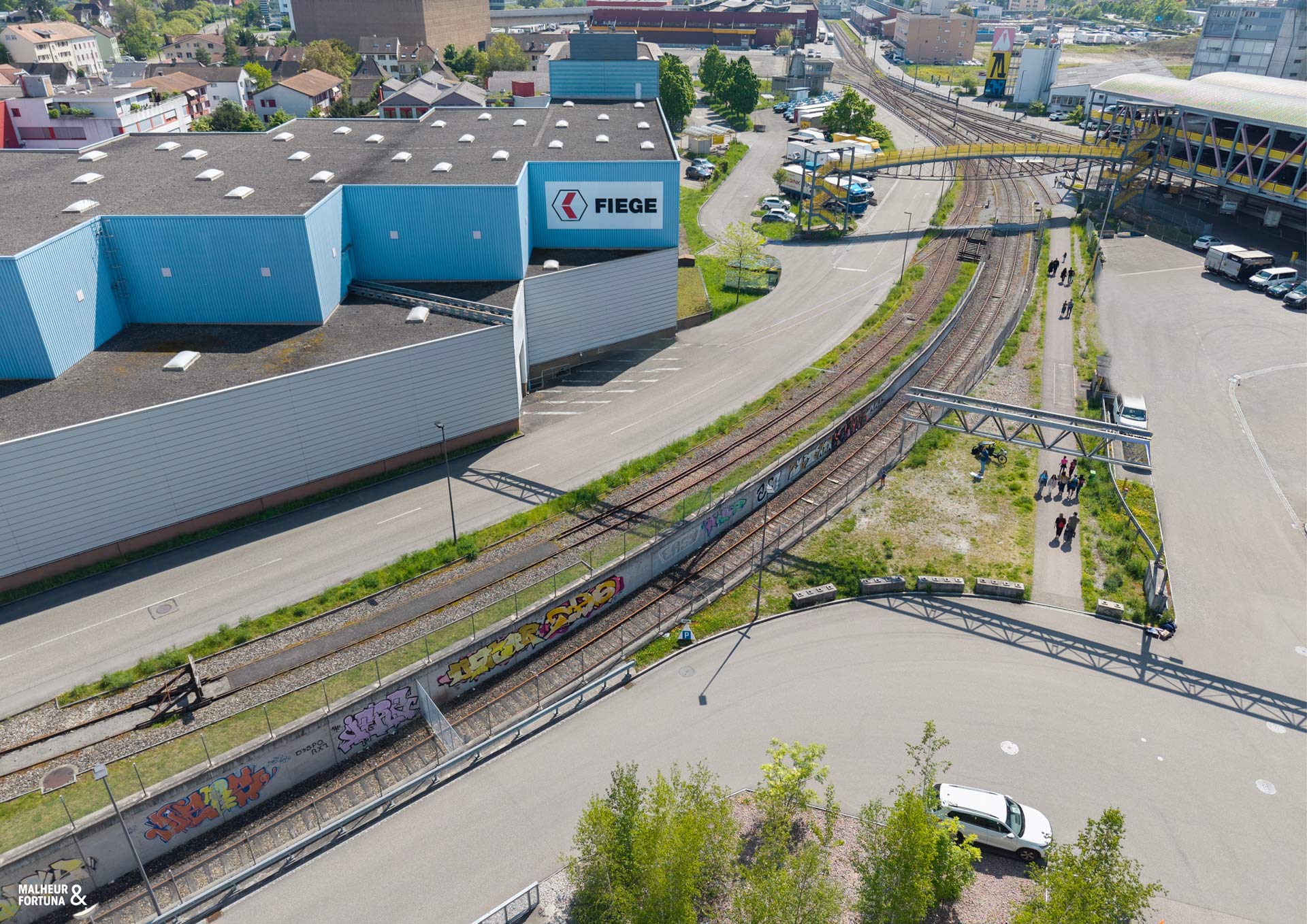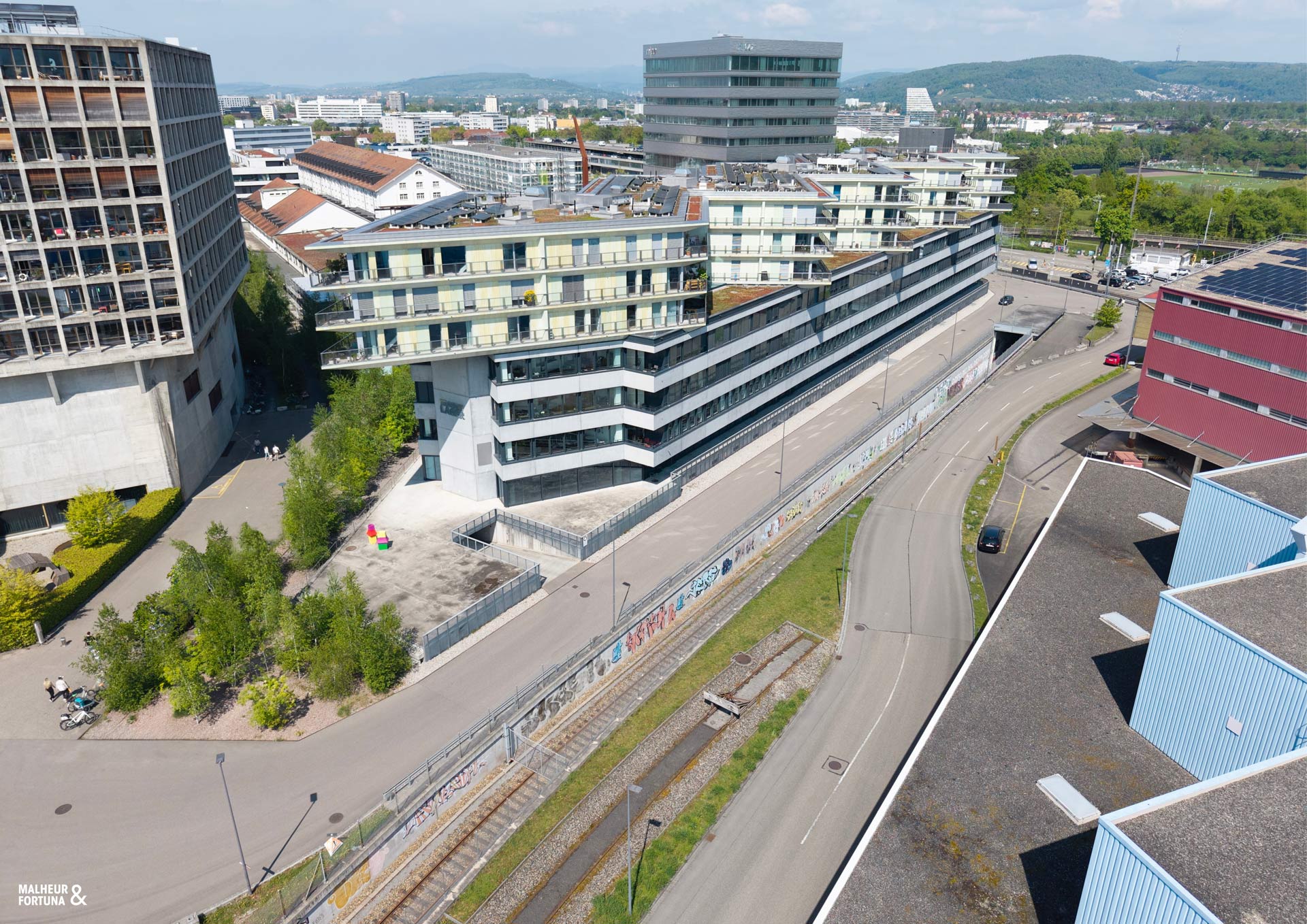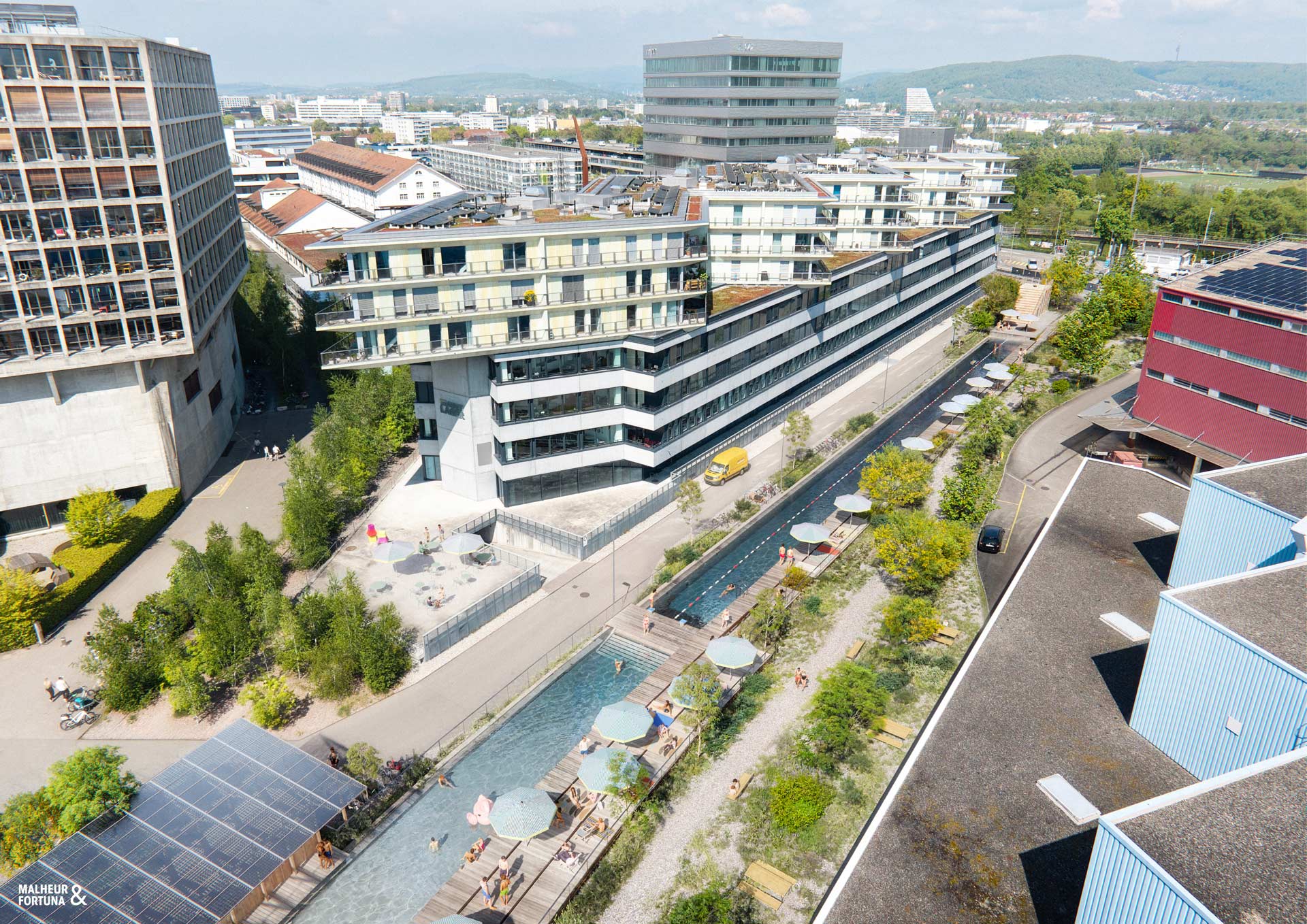Gleispool Dreispitz: Natural swimming pool on former industrial site, Basel, Switzerland

In the south end of Basel's Dreispitz area, the university campus is expanding and bringing new life to a space that was previously dominated by logistics and traffic. Existing structures are being repurposed.
The Gleispool is a pioneering project for multifunctional urban space, providing swimming facilities and green spaces. As a natural swimming pool with a 560 feet/ 170 meter swimming lane, the Gleispool also cools down today's heat island on hot summer days. As a first intervention, it greens and cools the previously heavily sealed traffic area and serves as the infrastructural basis for the later expansion of the university.
The water quality of the swimming facility must be ensured. A near-natural system that does not require chemicals or complex technology uses a sediment filter located at the bottom of the former railway ramp to clean the water of solids before it is pumped to a filter system and then sprayed over stones and intensive greenery. This removes any remaining impurities before the water is returned to the pool.
Transsolar has determined what is needed to make the track pool energy neutral. For pumps, refreshment stands, lighting, etc., as well as hot water for the refreshment stands during 100 days of operation in the summer, the requirement is approximately 30,000 to 40,000 kWh per year, most of which is accounted for by the operation of the pumps, which also run at night depending on the temperature. With a PV area of 2,637 ft²/ 245 m² or more (on the roof of the reception building), it is possible to achieve an energy-positive track pool on an annual basis. To do this, the panels are best installed horizontally, which favors their use in summer and maximizes the proportion of self-generated electricity. The proportion of self-generated electricity is strongly influenced by the running time of the pumps at night and can be around 40% during hot summer periods. A battery storage system with a capacity of 100 kWh (requiring approx. 70 ft³/ 2 m³ of space) can increase this proportion to up to 75%.
Transsolar has also outlined ideas for how off-season or winter operation could look. The simulations show that the total heat requirement for heating the pool throughout the year is extremely high, even when using a cover. From May to October, there is a cooling requirement at Dreispitz and thus waste heat that could theoretically be used to meet this requirement. Due to the expense and the expected low demand (use of the outdoor pool is highly dependent on weather conditions), extending the season by actively heating the pool can be ruled out. However, the potential for recooling via the pool exists and can both increase bathing comfort and reduce the heat island effect in Dreispitz. Another use for the elongated pool area could be to transform it into a curling rink in winter: heat is extracted from the pool water until it freezes. The waste heat generated could be used in winter to heat surrounding (office) areas or to operate a sauna.
The concept was tested using a mock-up, which showed that it is potentially feasible. The most important issues that need to be further developed are buoyancy and surface quality.








